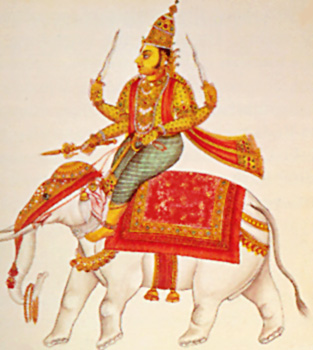 Duties of a King, as discussed chapter XIX of Book I in Arthashastra, has been divided into two parts. While in the first part the king is supposed to divide his time schedule in such a way that he is able to attend to all the demands of his people. In the second half the king is supposed to attend to the duties of the harem and wives which includes his domestic responsibilities towards his family. Like Protection of Prince the king is also responsible for the protection of his wives and other dependents.
Duties of a King, as discussed chapter XIX of Book I in Arthashastra, has been divided into two parts. While in the first part the king is supposed to divide his time schedule in such a way that he is able to attend to all the demands of his people. In the second half the king is supposed to attend to the duties of the harem and wives which includes his domestic responsibilities towards his family. Like Protection of Prince the king is also responsible for the protection of his wives and other dependents.
Duties of the King in the first part advises the king to firstly divide his time according to the sun clock which shall divide both day and night into one and half hours. Accordingly the king is advised to utilise every hour for different activities. It is expected that an energetic king shall be able to make every hour fruitful. During the one-eighth part of the day the king shall attend to accounts of receipts and expenditure; shall look into the affairs of both the citizen as well as country people; shall bathe, dine and study in the third part; receive revenue in gold; shall attend to the appointments of the superintendents; shall correspond in writs with his council of ministers and receive secret information from the spies; may engage himself in favourite amusements and self deliberations in the sixth part; may resolve to the supervision of the elephants, horses, chariots and infantry in the seventh part while considering various military plans with his commander in chief in the eighth part of the day.
Duties of the King then demarcate how the eight parts of the night are to be utilised by the king. During the first one-eighth part of the night, he shall receive secret emissaries; shall attend to bathing and supper and study; shall enter the bedchamber amid the sound of trumpets and enjoy sleep during the fourth and fifth parts; having been awakened by the sound of trumpets during the sixth part, he shall recall to his mind the injunctions of sciences as well as the day`s duties; during the seventh, he shall sit considering administrative measures and send out spies; and during the eighth division of the night he shall receive benedictions from sacrificial priests, teachers and the high priest, and having seen his physician, chief cook and astrologer, and having saluted both a cow with its calf and a bull by circumambulating round them, he shall get into his court. As his health permits the king shall be free to revise his course of the day and night.
Duties of the king do not allow king when in court to make his petitioners wait outside for decisions. Rather it advises the king to be spontaneous and firm in his decisions and be as accessible as possible for his own people. He shall therefore attend to the business of god and listen to the immediate call of his people .Accordingly the king should place himself in the company of learned people and practitioner of `trived` who shall share not only religious by other methods like witchcraft and Yoga to reach success .All this concludes his duties towards within himself and the court.
Duties of the King regarding the women and harem and wives are included in the chapter XX of Book I as well. Duties towards the harem mainly described the construction of the harem which has to be protected from fire, insects, animals as well as enemies. Kautilya takes full measures to secure the harem of the king as it is supposed to be the best possible place for the king to hide at a time of danger. The king can get his personal chamber located in the midst of the harem. Also Kautilya takes full care to check the purity of the queen as well as all the women living in the harem. The harem should primarily consist of separate chambers for all, a bath, secret passages made into the walls, underground chambers with the idols of goddesses, with large number of passages made in the walls and their staircases inside the pillars so that it gives easy roots to esc ape. The whole building is created with superior mechanical contrivances so that it can be easily pulled down whenever required.
Regarding duties towards the women the king is advised to b e careful and should take all measures towards their security by keeping them away from ascetics with shaven heads. Everyone shall stay in the same place which is allotted to him and every seals which are going outside and coming in the harem are to be checked.
Thus, Duties of the King has been enunciated in such a manner so that the king keeps complete watch on corner of the palace. This chapter includes the king`s exposure with his country men, personals of court room, priests, queen, concubines and others. It is mainly intended to make the king more accessible to the people with minimum rigidity.



















